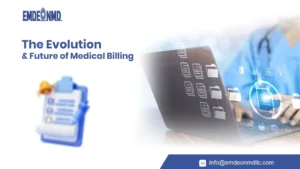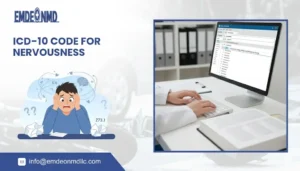Table of Contents
Revenue cycle management RCM is a prime focus in medical billing, serving a crucial role in managing operational services in the healthcare system. Medical billing is the main component in which the revenue cycle is being practised by professionals in the billing industry that requires professional expertise and educational background for the provision of accurate and high-quality services, ensuring timely and accurate billing and reimbursements of rendered medical services.
The main concerning thing in medical billing of rendering medical services to enrolled patients is when the revenue cycle begins in healthcare management. How does it progress, and does this timeframe matter in billing? All these questions are answered in this blog post.
Overview of revenue cycle
Revenue Cycle is a comprehensive process of managing administrative and clinical functions concerned with medical billing, including medical coding, claim submission, payment, followed by revenue generation, and ensuing financial performance analytics. Revenue cycle management RCM covers all basic to advanced step involved in medical billing initiating form initial patient registration, followed by insurance verification, medical coding and claim submission of patients encounter with the respective healthcare provider, ensuring timely reimbursement by the payers in an integrated system handled by expert RCM specialist having professional experience and certification along with experience in real time settings. Revenue cycle management RCM is an extensive approach to managing the revenue cycle.
Role of staff training and education in RCM
As revenue cycle management RCM is a highly significant component of medical billing that requires expertise in efficient handling of administrative and clinical tasks which regular training and educational programs must be arranged regularly for staff to ensure updated and advanced tool and software usage for the provision of accurate and complaint services with minimise risks of denials and rejections by the insurers. Along with these key roles of educational programs, accurate medical coding followed by proper claim submission is a key feature, in which patient communication is enhanced by trained staff focusing on serving the best patient experience.
When does the revenue cycle begin in healthcare management?
Is RCM benign forced any time in the whole billing process? Revenue cycle management RCM initiates with initial step of medical billing for ensuring validated and verified patient information covering insurance eligibility and verification along with other demographics and related details, acting as crucial component from initial step ensuring all necessary information to be accurate valid and verified on early basis to avoid any late risks of errors or denials. The most prominent step in which the revenue cycle is usually united is
- Patient Scheduling
- Patient Registration
- Insurance Verification
All these processes are keenly and properly ensured by efficient revenue cycle management RCM handled by professional experts, ensuring each patient detail is validated.
How does it proceed?
Revenue cycle initiation from initial registration and verification is followed by an interconnected process in which reporting patient encounters with proper documentation of diagnosis, treatment, and clinical evaluation are translated into medical doing through CPT, HCPCS, and ICD codes done by medical coders. Charge entry is done on the billing software, aligning other components, ensuring accurate claim Submission followed by reimbursement of submitted claims by the insurance company against the medical service rendered by the respective physician or other healthcare provider. All these key steps are focused on the revenue cycle for streamlined and smooth administrative functioning.
Does the time frame matter in RCM?
Time frame matters in medical billing of medical services, in which revenue cycle management is also time-dependent. Being time dependent, its significance becomes more focused and concerned, enhancing compliance by the administrative staff. Revenue cycle management requires proper time management in which timely initiation can ensure a smooth and streamlined billing process; otherwise, delay at any stage could lead to impaired cash flow, claim approval delays that influence overall revenue of the system, affecting the whole billing system’s financial aspects. Delay in insurance verification can lead to denial of claim due to incorrect CPT, ICD can cause denials, leading to time consumption along with fiscal instability.
Role of technology in RCM
Revenue Cycle Management Services being a prime component in the whole billing of medical services can be transformed and made efficient through advanced and high-tech billing and RCM software adoption, making every step optimized with precise solutions, ensuring maximum revenue with ensured financial growth through advanced and updated coding, billing of services according to updated regulatory guidelines. Technological advancement in RCM services has significant key rules in which some common and highly practiced high-tech tools are covered, listed ones:
- Electronic health records(EHRs)
- Practice management services
- Automated coding tools
- Claim scrubbing tools
- Patient portals
- Analytics & reporting tools
- Opting best billing software
10 significant challenges in RCM
Revenue cycle management RCM benign a significant component in medical billing is challenging and concerning at the same time, and requires proper management. Some common challenges being faced by the biller, other professionals working on the revenue cycle, among RCM covers risks of incorrect or invalid patient registration with incorrect patient demographics, insurance verification, and related information, leading to non-covered services, which impacts the whole billing process by influencing claim submission. Missed timely claim submission due to above mentioned steps is the most common cause of delays in the billing of patient claims, in which less trained staff have insufficient use of technology and tools affects billing.
Let’s EmdeonMD boost your revenue cycle management RCM output.
Still looking for accurate revenue cycle management RMC services? No need to worry, EmdeonMD is evolving optimized revenue cycle management RCM services, ensuring the best client experience, offering trustworthy and satisfactory services with proven results. For details, have a look at our service descriptions with varied blog and article posts for queries. EmdonMD serves its clients top-notch billing and RCM solutions with focused services. Give our experts a chance to optimize your service through our professional and high-quality services.
Don’t wait! Book yourself at this moment and just wait to have optimized solutions.
Frequently asked questions (FAQs)
1. What is the starting point of the revenue cycle?
The revenue cycle starts with patient scheduling, followed by registration and insurance verification.
2. Why is insurance verification important in RCM?
It ensures that services rendered are covered by the payer, reducing the risk of denied claims.
3. Can delayed coding impact reimbursement?
Yes, inaccurate or late coding can lead to claim denials and payment delays.
4. What technologies help in RCM?
Tools like EHRs, coding software, and analytics platforms enhance billing accuracy & speed.












